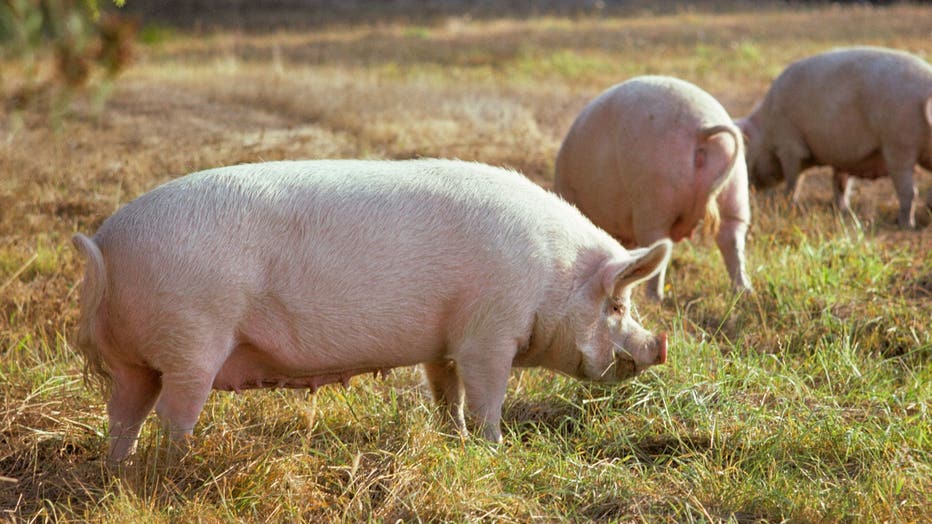Bird flu detected in pig for 1st time in US: What it means for humans

US to award Moderna $176M for bird flu vaccine
Infectious disease expert Dr. Peter Chin-Hong joins LiveNOW's Austin Westfall to discuss the latest news surrounding the bird flu outbreak.
A pig infected with bird flu in Oregon has raised concerns about the virus’s potential to threaten humans, but the current risk to the public remains low.
According to the U.S. Department of Agriculture, the pig that tested positive lived on a backyard farm in central Oregon, where different animals share water and are housed together. It’s the first time the virus has been detected in U.S. swine.
RELATED: 1st human death of bird flu strain H5N2 confirmed, WHO says
The farm was put under quarantine and all five pigs were euthanized so additional testing could be done. It’s not a commercial farm, and U.S. agriculture officials said there is no concern about the safety of the nation’s pork supply.
RELATED: Bird flu detected in beef for first time ever
But finding bird flu in a pig raises worries that the virus may be hitting a stepping stone to becoming a bigger threat to people, said Jennifer Nuzzo, a Brown University pandemic researcher.

FILE - Pigs in a pasture (Photo by D. Logan/ClassicStock /Getty Images)
Pigs can be infected with multiple types of flu, and the animals can play a role in making bird viruses better adapted to humans, she explained. The 2009 H1N1 flu pandemic had swine origins, Nuzzo noted.
The USDA has conducted genetic tests on the farm’s poultry and has not seen any mutations that suggest the virus is gaining an increased ability to spread to people. That indicates the current risk to the public remains low, officials said.
RELATED: Bird flu: Can humans get infected?
A different strain of the bird flu virus has been reported in pigs outside the U.S. in the past, and it did not trigger a human pandemic.
The Oregon pig infection "is noteworthy, but does it change the calculation of the threat level? No it doesn’t," Troy Sutton, a Penn State researcher who studies flu viruses in animals, said. If the virus starts spreading more widely among pigs and if there are ensuing human infections, "then we’re going to be more concerned."
So far this year, nearly 40 human cases have been reported — in California, Colorado, Washington, Michigan, Texas and Missouri — with mostly mild symptoms, including eye redness, reported. All but one of the people had been to contact with infected animals.

